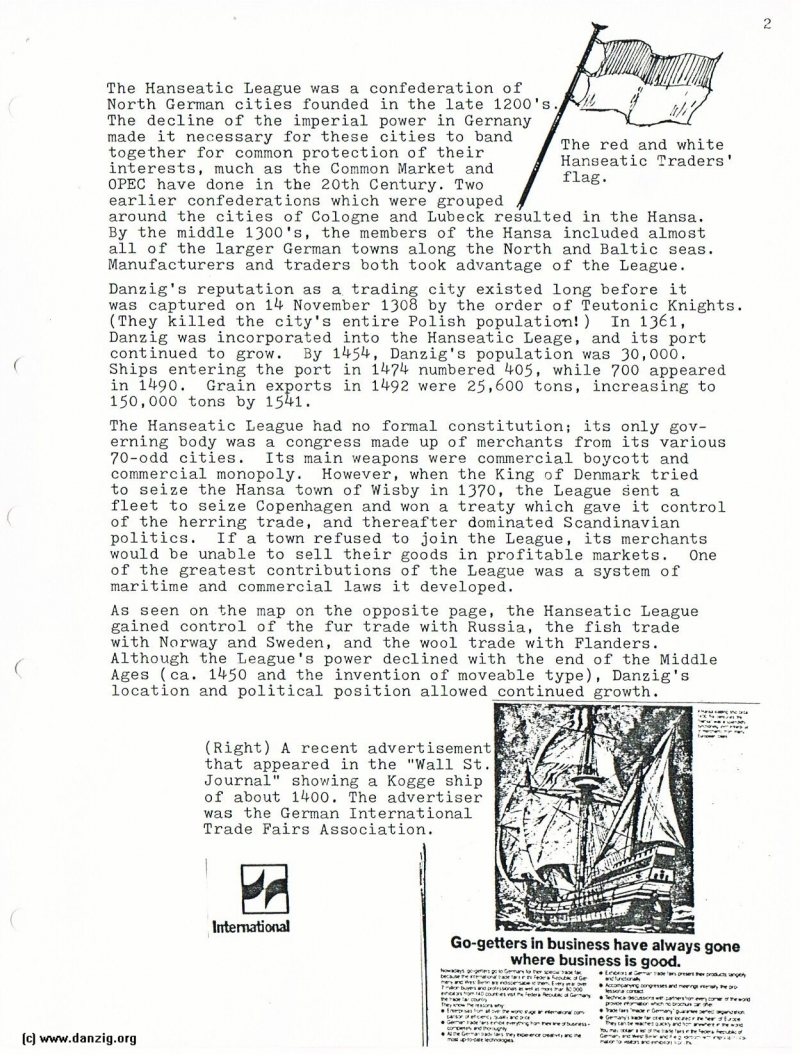
The red and white Hanseatic Traders flag
The Hanseatic League was a confederation of North German cities founded in the late 1200’s. The decline of the imperial power in Gernany made it necessary for these cities to band together for common protection of their interests, much as the Common Market and OPEC have done in the 20th Century. Two earlier confederations which were groupedaround the cities of Cologne and Lubeck resulted in the Hansa. By the middle 1300’s, the members of the Hansa included almost all of the larger German towns along the North and Baltic seas. Manufacturers and traders both took advantage of the League.
Danzig’s reputation as a trading city existed long before it was captured on 14 November 1308 by the order of Teutonic Knights. (They killed the city’s entire Polish population! ) In 1361, Danzig was incorporated into the Hanseatic Leage, and its port continued to grow. By 1454, Danzig’s population was 30,000. Ships entering the port in 1474 numbered 405, while 700 appeared in 1490. Grain exports in 1492 were 25,600 tons, increasing to 150,000 tons by 1541
The Hanseatic League had no formal constitution; its only governing body was a congress made up of merchants from its various 70-odd cities. Its main weapons were commercial boycott and commercial monopoly. However, when the King of Denmark tried to seize the Hansa town of Wisby in 1370, the League šent a fleet to seize Copenhagen and won a treaty which gave it control of the herring trade, and thereafter dominated Scandinavian politics. If a town refused to join the League, its merchants would be unable to sell their goods in profitable markets. One of the greatest contributions of the League was a system of maritime and commercial laws it developed.
As seen on the map on the opposite page, the Hanseatic League gained control of the fur trade with Russia, the fish trade with Norway and Sweden, and the wool trade with Flanders. Although the League’s power declined with the end of the Middle Ages (ca. 1450 and the invention of moveable type), Danzig’s location and political position allowed continued growth.
(Right) A recent advertisement that appeared in the “Wall St. Journal” showing a Kogge ship of about 1400. The advertiser was the German International Trade Fairs Association.
Danzig Report Nr. 42 - January - February - March - 1984, Page 3.
Hits: 3694
Added: 12/06/2015
Copyright: 2025 Danzig.org

